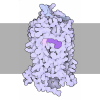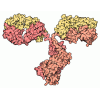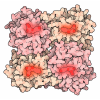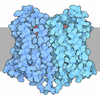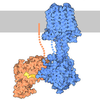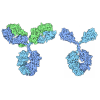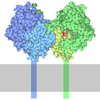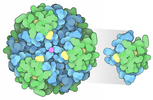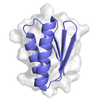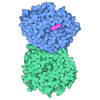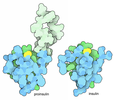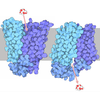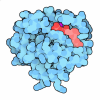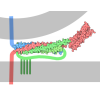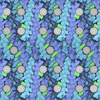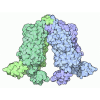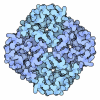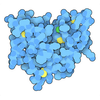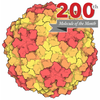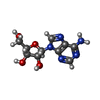+ Open data
Open data
- Basic information
Basic information
| Entry | Database: PDB / ID: 8yh2 | |||||||||||||||||||||
|---|---|---|---|---|---|---|---|---|---|---|---|---|---|---|---|---|---|---|---|---|---|---|
| Title | A3R-Gi complex bound to adenosine | |||||||||||||||||||||
 Components Components |
| |||||||||||||||||||||
 Keywords Keywords | SIGNALING PROTEIN / GPCR / adenosine receptor / complex / G protein | |||||||||||||||||||||
| Function / homology |  Function and homology information Function and homology informationOlfactory Signaling Pathway / Sensory perception of sweet, bitter, and umami (glutamate) taste / Synthesis, secretion, and inactivation of Glucagon-like Peptide-1 (GLP-1) / G protein-coupled adenosine receptor activity / Activation of the phototransduction cascade / Activation of G protein gated Potassium channels / G-protein activation / G beta:gamma signalling through PI3Kgamma / Prostacyclin signalling through prostacyclin receptor / G beta:gamma signalling through PLC beta ...Olfactory Signaling Pathway / Sensory perception of sweet, bitter, and umami (glutamate) taste / Synthesis, secretion, and inactivation of Glucagon-like Peptide-1 (GLP-1) / G protein-coupled adenosine receptor activity / Activation of the phototransduction cascade / Activation of G protein gated Potassium channels / G-protein activation / G beta:gamma signalling through PI3Kgamma / Prostacyclin signalling through prostacyclin receptor / G beta:gamma signalling through PLC beta / ADP signalling through P2Y purinoceptor 1 / Thromboxane signalling through TP receptor / Presynaptic function of Kainate receptors / G beta:gamma signalling through CDC42 / Inhibition of voltage gated Ca2+ channels via Gbeta/gamma subunits / G alpha (12/13) signalling events / Glucagon-type ligand receptors / G beta:gamma signalling through BTK / ADP signalling through P2Y purinoceptor 12 / Adrenaline,noradrenaline inhibits insulin secretion / Cooperation of PDCL (PhLP1) and TRiC/CCT in G-protein beta folding / Ca2+ pathway / Thrombin signalling through proteinase activated receptors (PARs) / G alpha (z) signalling events / Extra-nuclear estrogen signaling / G alpha (s) signalling events / G alpha (q) signalling events / G alpha (i) signalling events / Glucagon-like Peptide-1 (GLP1) regulates insulin secretion / High laminar flow shear stress activates signaling by PIEZO1 and PECAM1:CDH5:KDR in endothelial cells / Vasopressin regulates renal water homeostasis via Aquaporins / adenylate cyclase inhibitor activity / positive regulation of protein localization to cell cortex / T cell migration / Adenylate cyclase inhibitory pathway / D2 dopamine receptor binding / response to prostaglandin E / adenylate cyclase regulator activity / G protein-coupled serotonin receptor binding / adenylate cyclase-inhibiting serotonin receptor signaling pathway / cellular response to forskolin / regulation of mitotic spindle organization / bioluminescence / viral budding from plasma membrane / generation of precursor metabolites and energy / Regulation of insulin secretion / positive regulation of cholesterol biosynthetic process / negative regulation of insulin secretion / G protein-coupled receptor binding / response to peptide hormone / adenylate cyclase-inhibiting G protein-coupled receptor signaling pathway / adenylate cyclase-modulating G protein-coupled receptor signaling pathway / centriolar satellite / G-protein beta/gamma-subunit complex binding / G beta:gamma signalling through PLC beta / Presynaptic function of Kainate receptors / Thromboxane signalling through TP receptor / Activation of G protein gated Potassium channels / Inhibition of voltage gated Ca2+ channels via Gbeta/gamma subunits / G-protein activation / Prostacyclin signalling through prostacyclin receptor / G beta:gamma signalling through CDC42 / Glucagon signaling in metabolic regulation / G beta:gamma signalling through BTK / ADP signalling through P2Y purinoceptor 12 / photoreceptor disc membrane / Glucagon-type ligand receptors / Adrenaline,noradrenaline inhibits insulin secretion / GDP binding / Vasopressin regulates renal water homeostasis via Aquaporins / Glucagon-like Peptide-1 (GLP1) regulates insulin secretion / G alpha (z) signalling events / cellular response to catecholamine stimulus / ADORA2B mediated anti-inflammatory cytokines production / ADP signalling through P2Y purinoceptor 1 / G beta:gamma signalling through PI3Kgamma / Cooperation of PDCL (PhLP1) and TRiC/CCT in G-protein beta folding / adenylate cyclase-activating dopamine receptor signaling pathway / GPER1 signaling / cellular response to prostaglandin E stimulus / G-protein beta-subunit binding / heterotrimeric G-protein complex / G alpha (12/13) signalling events / sensory perception of taste / signaling receptor complex adaptor activity / Thrombin signalling through proteinase activated receptors (PARs) / retina development in camera-type eye / G protein activity / GTPase binding / Ca2+ pathway / fibroblast proliferation / midbody / cell cortex / High laminar flow shear stress activates signaling by PIEZO1 and PECAM1:CDH5:KDR in endothelial cells / G alpha (i) signalling events / G alpha (s) signalling events / phospholipase C-activating G protein-coupled receptor signaling pathway / clathrin-dependent endocytosis of virus by host cell / G alpha (q) signalling events / Hydrolases; Acting on acid anhydrides; Acting on GTP to facilitate cellular and subcellular movement Similarity search - Function | |||||||||||||||||||||
| Biological species |   Homo sapiens (human) Homo sapiens (human) 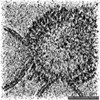 Influenza A virus Influenza A virus  Human orthopneumovirus Human orthopneumovirus | |||||||||||||||||||||
| Method | ELECTRON MICROSCOPY / single particle reconstruction / cryo EM / Resolution: 3.27 Å | |||||||||||||||||||||
 Authors Authors | Oshima, H.S. / Shihoya, W. / Nureki, O. | |||||||||||||||||||||
| Funding support |  Japan, 1items Japan, 1items
| |||||||||||||||||||||
 Citation Citation |  Journal: Nat Commun / Year: 2024 Journal: Nat Commun / Year: 2024Title: Structural insights into the agonist selectivity of the adenosine A receptor. Authors: Hidetaka S Oshima / Akiko Ogawa / Fumiya K Sano / Hiroaki Akasaka / Tomoyoshi Kawakami / Aika Iwama / Hiroyuki H Okamoto / Chisae Nagiri / Fan-Yan Wei / Wataru Shihoya / Osamu Nureki /  Abstract: Adenosine receptors play pivotal roles in physiological processes. Adenosine A receptor (AR), the most recently identified adenosine receptor, is expressed in various tissues, exhibiting important ...Adenosine receptors play pivotal roles in physiological processes. Adenosine A receptor (AR), the most recently identified adenosine receptor, is expressed in various tissues, exhibiting important roles in neuron, heart, and immune cells, and is often overexpressed in tumors, highlighting the therapeutic potential of AR-selective agents. Recently, we identified RNA-derived N-methyladenosine (mA) as an endogenous agonist for AR, suggesting the relationship between RNA-derived modified adenosine and AR. Despite extensive studies on the other adenosine receptors, the selectivity mechanism of AR, especially for AR-selective agonists such as mA and namodenoson, remained elusive. Here, we identify tRNA-derived N-isopentenyl adenosine (iA) as an AR-selective ligand via screening of modified nucleosides against the adenosine receptors. Like mA, iA is found in the human body and may be an endogenous AR ligand. Our cryo-EM analyses elucidate the AR-G complexes bound to adenosine, 5'-N-ethylcarboxamidoadenosine (NECA), mA, iA, and namodenoson at overall resolutions of 3.27 Å (adenosine), 2.86 Å (NECA), 3.19 Å (mA), 3.28 Å (iA), and 3.20 Å (namodenoson), suggesting the selectivity and activation mechanism of AR. We further conduct structure-guided engineering of mA-insensitive AR, which may aid future research targeting mA and AR, providing a molecular basis for future drug discovery. | |||||||||||||||||||||
| History |
|
- Structure visualization
Structure visualization
| Structure viewer | Molecule:  Molmil Molmil Jmol/JSmol Jmol/JSmol |
|---|
- Downloads & links
Downloads & links
- Download
Download
| PDBx/mmCIF format |  8yh2.cif.gz 8yh2.cif.gz | 231.5 KB | Display |  PDBx/mmCIF format PDBx/mmCIF format |
|---|---|---|---|---|
| PDB format |  pdb8yh2.ent.gz pdb8yh2.ent.gz | 166.4 KB | Display |  PDB format PDB format |
| PDBx/mmJSON format |  8yh2.json.gz 8yh2.json.gz | Tree view |  PDBx/mmJSON format PDBx/mmJSON format | |
| Others |  Other downloads Other downloads |
-Validation report
| Summary document |  8yh2_validation.pdf.gz 8yh2_validation.pdf.gz | 908.1 KB | Display |  wwPDB validaton report wwPDB validaton report |
|---|---|---|---|---|
| Full document |  8yh2_full_validation.pdf.gz 8yh2_full_validation.pdf.gz | 922.6 KB | Display | |
| Data in XML |  8yh2_validation.xml.gz 8yh2_validation.xml.gz | 34.7 KB | Display | |
| Data in CIF |  8yh2_validation.cif.gz 8yh2_validation.cif.gz | 54.7 KB | Display | |
| Arichive directory |  https://data.pdbj.org/pub/pdb/validation_reports/yh/8yh2 https://data.pdbj.org/pub/pdb/validation_reports/yh/8yh2 ftp://data.pdbj.org/pub/pdb/validation_reports/yh/8yh2 ftp://data.pdbj.org/pub/pdb/validation_reports/yh/8yh2 | HTTPS FTP |
-Related structure data
| Related structure data |  39279MC 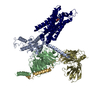 8yh0C  8yh3C  8yh5C 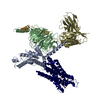 8yh6C M: map data used to model this data C: citing same article ( |
|---|---|
| Similar structure data | Similarity search - Function & homology  F&H Search F&H Search |
- Links
Links
- Assembly
Assembly
| Deposited unit | 
|
|---|---|
| 1 |
|
- Components
Components
| #1: Protein | Mass: 40586.332 Da / Num. of mol.: 1 Source method: isolated from a genetically manipulated source Source: (gene. exp.)   Homo sapiens (human) / References: UniProt: P62871 Homo sapiens (human) / References: UniProt: P62871 | ||||||||||
|---|---|---|---|---|---|---|---|---|---|---|---|
| #2: Protein | Mass: 48846.695 Da / Num. of mol.: 2 Source method: isolated from a genetically manipulated source Source: (gene. exp.)  Homo sapiens (human) / Gene: GNG2, GNAI1 / Production host: Homo sapiens (human) / Gene: GNG2, GNAI1 / Production host:  Homo sapiens (human) / References: UniProt: P59768, UniProt: P63096 Homo sapiens (human) / References: UniProt: P59768, UniProt: P63096#3: Protein | | Mass: 88315.891 Da / Num. of mol.: 1 Source method: isolated from a genetically manipulated source Source: (gene. exp.)  Influenza A virus (A/Victoria/3/1975(H3N2)), (gene. exp.) Influenza A virus (A/Victoria/3/1975(H3N2)), (gene. exp.)   Human orthopneumovirus Human orthopneumovirusStrain: A/Victoria/3/1975(H3N2) / Gene: HA, ADORA3 / Production host:  Homo sapiens (human) Homo sapiens (human)References: UniProt: P03435, UniProt: W5QED6, UniProt: A0A5P9VSM6 #4: Antibody | | Mass: 27720.795 Da / Num. of mol.: 1 Source method: isolated from a genetically manipulated source Source: (gene. exp.)   Homo sapiens (human) Homo sapiens (human)#5: Chemical | ChemComp-ADN / | Has ligand of interest | Y | Has protein modification | Y | |
-Experimental details
-Experiment
| Experiment | Method: ELECTRON MICROSCOPY |
|---|---|
| EM experiment | Aggregation state: PARTICLE / 3D reconstruction method: single particle reconstruction |
- Sample preparation
Sample preparation
| Component | Name: A3R-Gi complex bound to adenosine / Type: COMPLEX / Entity ID: #1, #3, #2, #4 / Source: RECOMBINANT |
|---|---|
| Source (natural) | Organism:  |
| Source (recombinant) | Organism:  Homo sapiens (human) Homo sapiens (human) |
| Buffer solution | pH: 8 |
| Specimen | Embedding applied: NO / Shadowing applied: NO / Staining applied: NO / Vitrification applied: YES |
| Vitrification | Cryogen name: ETHANE |
- Electron microscopy imaging
Electron microscopy imaging
| Experimental equipment |  Model: Titan Krios / Image courtesy: FEI Company |
|---|---|
| Microscopy | Model: FEI TITAN KRIOS |
| Electron gun | Electron source:  FIELD EMISSION GUN / Accelerating voltage: 300 kV / Illumination mode: FLOOD BEAM FIELD EMISSION GUN / Accelerating voltage: 300 kV / Illumination mode: FLOOD BEAM |
| Electron lens | Mode: BRIGHT FIELD / Nominal defocus max: 1600 nm / Nominal defocus min: 800 nm |
| Image recording | Electron dose: 50 e/Å2 / Film or detector model: GATAN K3 (6k x 4k) |
- Processing
Processing
| EM software | Name: PHENIX / Category: model refinement |
|---|---|
| CTF correction | Type: PHASE FLIPPING AND AMPLITUDE CORRECTION |
| 3D reconstruction | Resolution: 3.27 Å / Resolution method: FSC 0.143 CUT-OFF / Num. of particles: 160357 / Symmetry type: POINT |
 Movie
Movie Controller
Controller








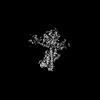








 PDBj
PDBj
